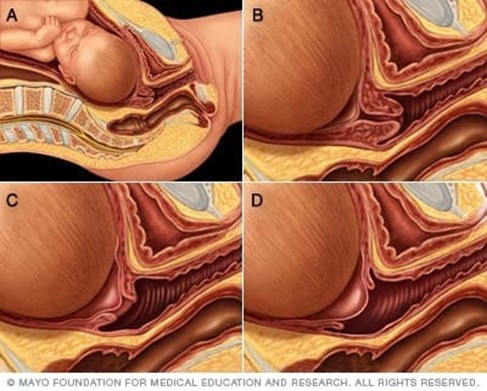What are the signs and symptoms of Thalassemia? Select all that apply.
Slow growth.
Fatigue.
Hematoma.
Pruritus.
Correct Answer : A,B
Choice A reason:
Slow growth is a common symptom of thalassemia, especially in children. It is caused by the reduced production of hemoglobin and red blood cells, which leads to anemia and poor oxygen delivery to the tissues. Slow growth can also affect the development of facial bones and cause deformities.
Choice B reason:
Fatigue is another common symptom of thalassemia, also related to anemia and low oxygen levels in the body. People with thalassemia may feel tired, weak, and short of breath even after mild physical activity. Fatigue can also affect their mood, concentration, and quality of life.
Choice C reason:
Hematoma is not a typical symptom of thalassemia. Hematoma is a collection of blood under the skin or in an organ, usually caused by trauma, injury, or bleeding disorders. People with thalassemia may have a higher risk of bleeding due to low platelet counts or frequent blood transfusions, but this does not necessarily result in hematoma.
Choice D reason:
Pruritus is not a typical symptom of thalassemia. Pruritus is a sensation of itching that can affect any part of the body. It can have many causes, such as dry skin, allergies, infections, or liver problems. People with thalassemia may experience pruritus as a side effect of iron overload or iron chelation therapy, but it is not a direct consequence of the condition.
Choice E reason:
Ecchymoses are not typical symptoms of thalassemia. Ecchymoses are large bruises that appear on the skin due to bleeding under the surface. They can be caused by trauma, injury, or bleeding disorders. People with thalassemia may have a higher risk of bleeding due to low platelet counts or frequent blood transfusions, but this does not necessarily result in ecchymoses.
Nursing Test Bank
Naxlex Comprehensive Predictor Exams
Related Questions
Correct Answer is B
Explanation
Choice A reason:
Contractions every 3 to 4 min are not a definitive sign of labor, as they can also occur in false labor or Braxton Hicks contractions. These are irregular and do not cause cervical changes.

Choice B reason:
Cervical dilation is the most reliable indicator of true labor, as it shows that the uterus is contracting effectively and preparing for delivery. Cervical dilation is measured in centimeters from 0 to 10, with 10 being fully dilated.
Choice C reason:
Pain just above the navel is not a sign of labor, but rather a possible sign of an abdominal problem such as appendicitis or gallbladder disease. Labor pain usually starts in the lower back and radiates to the abdomen and thighs.
Choice D reason:
Amniotic fluid in the vaginal vault is not a conclusive sign of labor, as it can also result from a premature rupture of membranes (PROM) or a high leak of amniotic fluid. PROM occurs when the amniotic sac breaks before the onset of labor, which can increase the risk of infection and complications for the mother and the baby.
Correct Answer is B
Explanation
Choice A reason:
Swimming is one of the best and safest exercises for pregnant women. It exercises your large muscle groups, provides cardiovascular benefits, reduces swelling, and allows you to feel weightless. Swimming is also a low-impact exercise that does not put too much stress on your joints and muscles. Therefore, this statement does not indicate a need for additional teaching.
Choice B reason:
Racquetball is not an appropriate exercise during pregnancy. It is a high-impact sport that involves sudden changes of direction, quick movements, and the risk of falling or getting hit by the ball or the racquet. These factors can increase the chance of injury, bleeding, or premature labor. Therefore, this statement indicates a need for additional teaching.
Choice C reason:
Cycling on a stationary bike is a safe exercise during pregnancy. It provides moderate aerobic conditioning and relieves stress and tension in your joints and muscles. Cycling on a stationary bike also reduces the risk of falling or losing balance compared to cycling on a regular bike. Therefore, this statement does not indicate a need for additional teaching.
Choice D reason:
Yoga is a beneficial exercise during pregnancy. It can help you relax, improve your flexibility, strengthen your muscles, and prepare your body for labor and delivery. Yoga can also help you cope with symptoms of depression and anxiety during pregnancy. However, you should avoid hot yoga or poses that involve lying flat on your back, twisting your abdomen, or compressing your belly. Therefore, this statement does not indicate a need for additional teaching.
Whether you are a student looking to ace your exams or a practicing nurse seeking to enhance your expertise , our nursing education contents will empower you with the confidence and competence to make a difference in the lives of patients and become a respected leader in the healthcare field.
Visit Naxlex, invest in your future and unlock endless possibilities with our unparalleled nursing education contents today
Report Wrong Answer on the Current Question
Do you disagree with the answer? If yes, what is your expected answer? Explain.
Kindly be descriptive with the issue you are facing.
